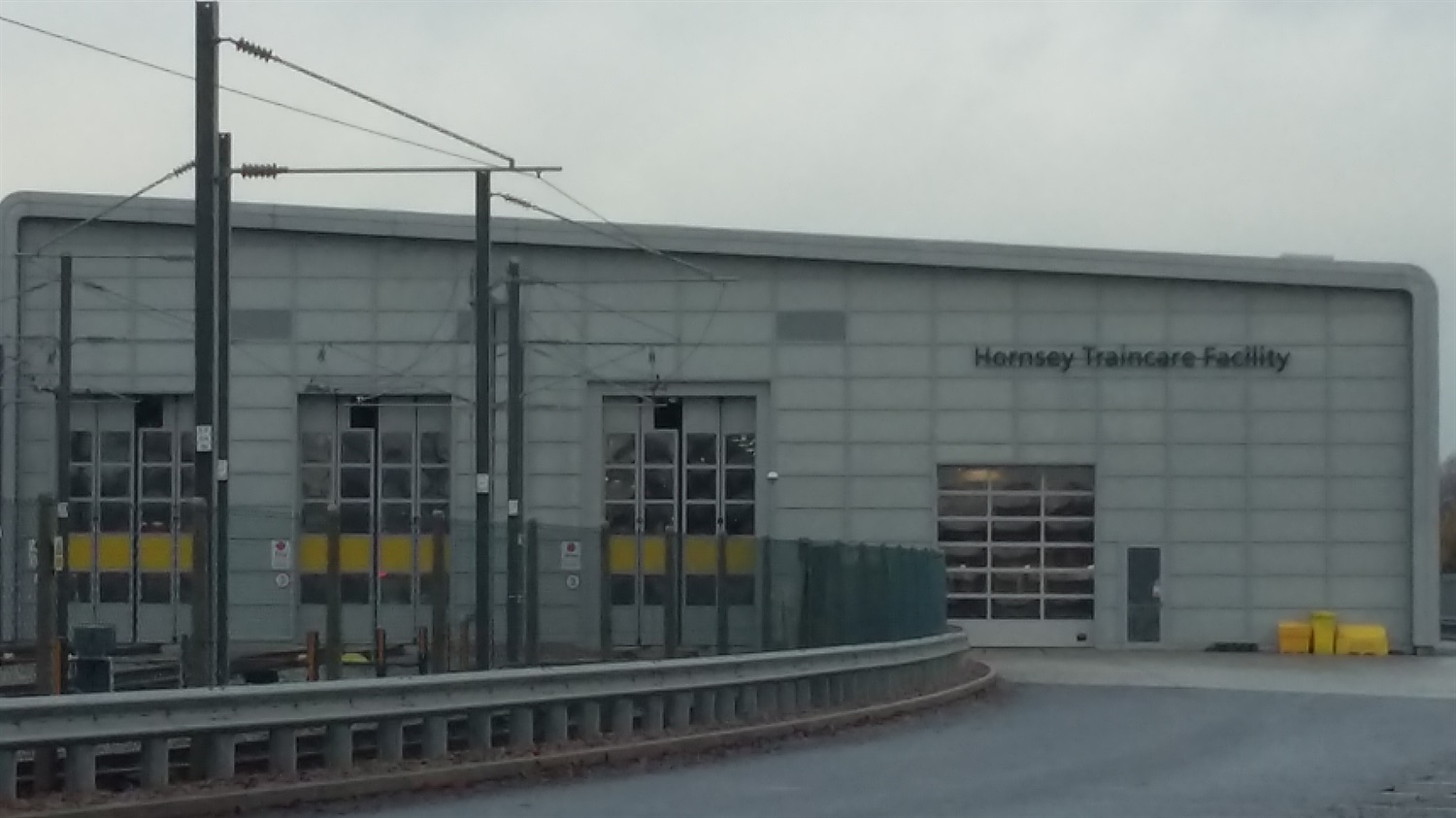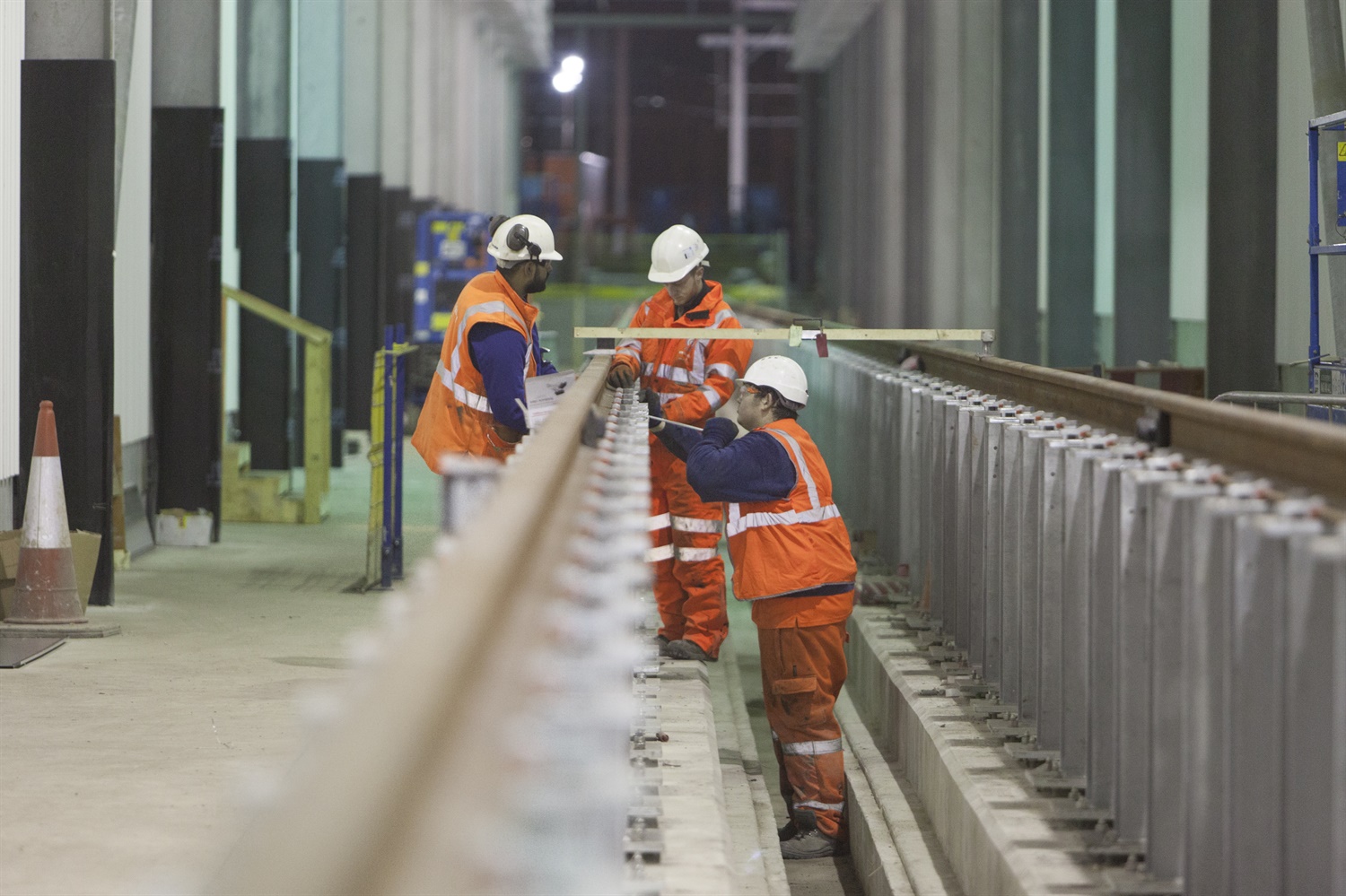14.12.16
Hornsey depot set to transform Great Northern services
RTM attended an event to celebrate the completion of the new traincare centre at Hornsey, which will enable the transformation of Great Northern’s rail services.
The state-of-the-art depot, which will house and maintain £1bn worth of new train fleets, was built by Siemens using main contractor VolkerFitzpatrick.
The recent completion of the new Hornsey facility, coupled with the existing building, has created one of the UK’s largest train servicing facilities.

Chris Evans, managing director for the civil engineering division for Volker-Fitzpatrick, argued that the biggest challenge of delivering this four-year project on time and on budget was the environment “with rail lines in operation on this key route in London”.
The new facility is part of a £300m investment by Siemens that includes the Three Bridges depot, which opened last year to service and currently maintain the Class 700 trains in operation on the Thameslink Brighton to Bedford route and Wimbledon Loop.
Over 200 GTR staff work at the original maintenance building, maintaining a total of six classes of trains – 313, 317, 321, 319,365 and 387. Going forward, Siemens will maintain the new Class 700 trains in the new three-road shed, which are due to enter service in 2017. It will also maintain the Class 717 Moorgate trains, due to arrive in late 2018 for service in 2019.
According to Gerry McFadden, GTR engineering director, the new facility will support the biggest renewal in the history of this part of the Great Northern railway, “and create fabulous new journeys on to an expanded Thameslink network”.
Asked about the progress of the Class 700s, McFadden said that the trains are doing “remarkably well”, with only a couple of odd faults, including occasionally braking in neutral sections, which have now been rectified.
“The new maintenance building at Hornsey is a crucial part of the government-sponsored Thameslink Programme which will support the exciting new cross-London connections,” he added.

The new depot includes stabling capacity for 188 new Class 700 carriages, an underframe cleaning facility, two bogie lifts and full depot signalling. Over the last two years, a number of enhancements have also been made to the original depot, including a new control room, a second underframe cleaning facility, security upgrades and a new depot personnel protection system.
Dave Poole, GTR depot manager at Hornsey, said that the move to being a digitally-enabled depot has led to a number of safety improvements and improved the efficiency of the site.
As well as the depot, large new sidings and improved servicing have been introduced for GTR’s new fleets. This includes the Class 387s currently entering service, which will run between London King’s Cross and Peterborough, Cambridge and King’s Lynn.
Asked about the introduction of the new fleet, McFadden said: “We have just taken out of service, as of Monday, Class 321s. These are being replaced with the first phase of the Class 387s.
“The second phase will come in Easter/May and they will replace the 317s. Later then, in 2017, the Class 700s will come over. Finally, in 2018-19, the Class 313 fleet will be being replaced by 717s. All of that is facilitated by the work provided here.
“We will have the total replacement of 365s, but will keep 19 in the end. They will run Cambridge and Peterborough services. Nothing will be allowed through the central core without ETCS.
“The 700s and 717s have been built with ETCS, and the 387s have been built with ETCs facilitation. We are ready, on this part of the railway, for the next phase of digital railway.”
.jpg)
Dave Hooper, Thameslink programme director for Siemens UK, added that the new depot will be a “first-class, state-of-the-art train care facility for the excellent new Class 700 Thameslink trains, which will make journeys in and out of London more comfortable and more reliable for passengers”.
Full coverage from the event will be provided in the December/January edition of RTM.